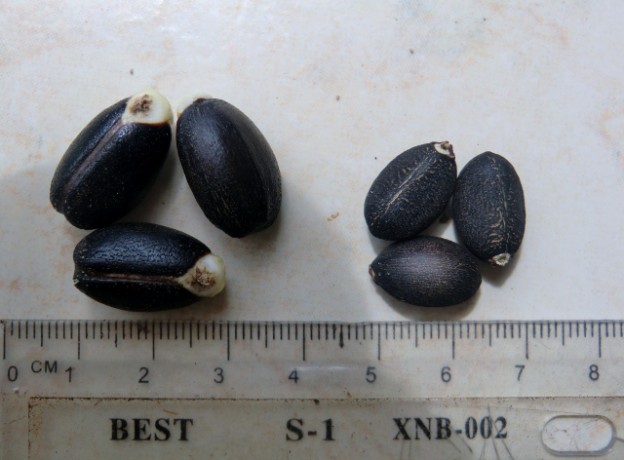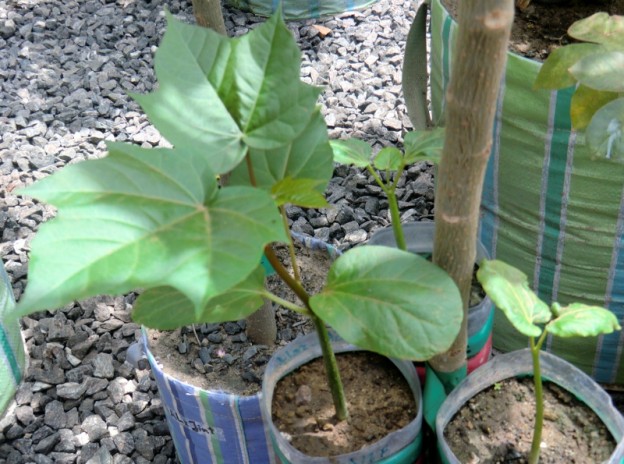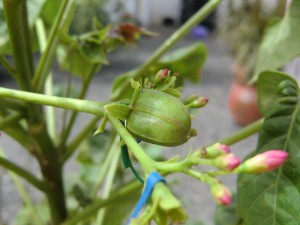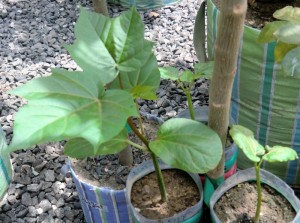What exactly makes a certain Jatropha accession an elite cultivar? You can find the term everywhere but a clear definition is usually not given. Therefore I want to explore this subject today and attempt to demonstrate how an answer translates into the daily work of a Jatropha breeder.
The term itself is simple: elite means something like “better than average” and cultivar is just an abbreviation of “cultivated variety”. But what does it really mean to us?
The most general and holistic objective when breeding for an improved commercial crop is of course always maximum profitability for the farmer. As this is self explanatory only a next level break down of objectives can offer some insight. In our program we use 4 groups of traits which in turn again break down into the real, identifiable traits when observing a selected plant.
The groups we use at Bionic Palm are:
- Seed Quality
- Seed Yield
- Agronomy
- Pest resistance.
We are looking for improved traits in all of the above groups. Let’s have a quick look at each group to see some of the aspects a breeder is really looking for every day.
Seed Quality
For us this includes several individual traits, all linking back to profitability of the crop of course.
- Toxicity
- Uniformity within the seeds
- General healthiness of the seeds
- Chemical composition of oil and cake.
No further explanations needed here I think.
Seed Yield
This is the most relevant for most people discussing Jatropha, but what are we really talking about, when we use the term?
Many people would just want to count the seeds or go by tons per ha. An approach that would translate into something like number of seeds harvested per plant per year. This again translates into bottom line traits like branching (self or pruning induced), number of fruit clusters or fluorescences per branch, number of fruits per cluster (= number of total flowers in a fluorescence plus male:female flower ratio). Not too difficult to understand, once you know the Jatropha exclusively flowers at the top of a branch.
However, that’s not even half the truth. In our understanding the high level measurement must actually be average amount of crude oil obtained per ha (or acre) combined with average amount of cake per ha.
We have recently taken a closer look at seeds obtained from the various hybrids we produce. A comparison shows significant differences in seed weight and oil content which are actually quite stunning. And the spread is increasing the longer we breed…
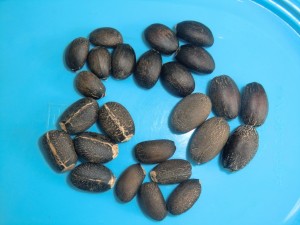
The typical measurement 100 seed weight varies from around 45g to 98g in our current accessions and oil content ranges from 25% to clearly over 50%. That means with an equal number of seeds per ha I can actually have up to 4 times the oil!
Agronomy
Lets move on to traits important for agronomic reasons. Many of them are related to the cost involved in farming Jatropha and the most to the ease of harvesting.
There is the uniformity of fruit ripening which determines how many times a picker has to pass a plant per season, then there is canopy structure and size of fruit clusters which determine the ease and speed of harvesting. Other important agronomic traits are self branching (without the need of pruning). Also drought resistance or rather the reaction to water stress is an important trait. We find that there are tremendous differences between accessions. The difference is at what level of water stress a plant stops female flowers, no flowers at all, throws off developing fruits and more. We see a clear pattern of those reactions differing greatly among accessions. I also have to admit that so far the best performers are the weakest in terms of water stress resistance.
Pest Resistance
Many of the common publications about Jatropha suggest that their toxicity would protect them from pests. This is not the case! The most serious pest we are confronted with is the papaya mealy bug. It comes and goes with water stress. There is no correlation with toxicity at all, however a clear correlation with resistance against water stress. And it should be at least mentioned here that the available phosphorus in the soil plays a major role in any plants ability to handle water stress. Therefore the right soil amendments like mycorrhiza can make a huge difference in addition to the best suited accessions if you plan to plant Jatropha in the desert. 🙂
I am aware that this review of relevant traits in Jatropha is anything but exhaustive, but I don’t want to bore my readers too much with the obvious. Therefore I tried to point out only a few of the less discussed but important aspects of this fundamental subject on the way to true Jatropha elite cultivars.
 It has been only a month since we last wrote about heterosis in Jatropha breeding. However, we had not seen then, what we have seen now…
It has been only a month since we last wrote about heterosis in Jatropha breeding. However, we had not seen then, what we have seen now…